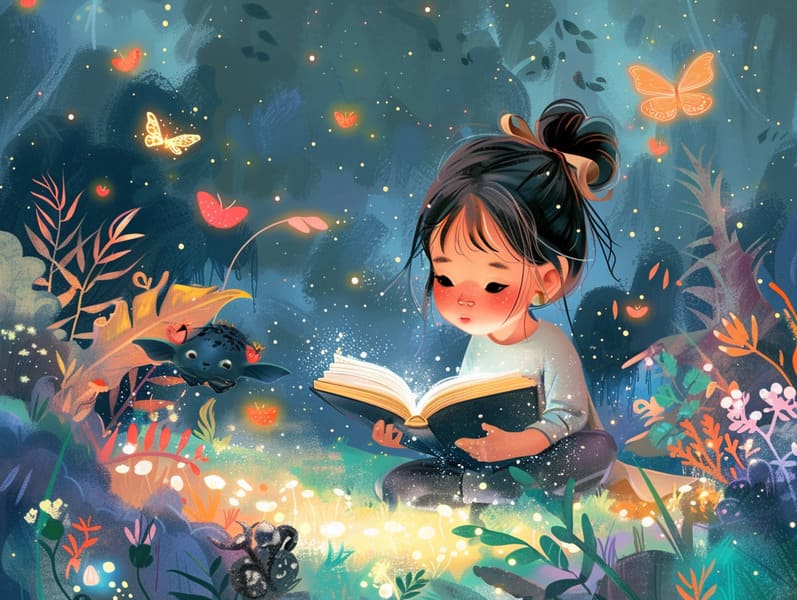The Beauty of Evening Narratives: Establishing Prized Moments with Your Family
The Beauty of Evening Narratives: Establishing Prized Moments with Your Family
Blog Article

Sleepy time is a cherished time for kids and their parents. It’s a time to wind down, get cozy, and enjoy the enchantment of sleepy-time tales.
For ages, nightly tales for children have been a beloved habit, offering more than just a way to go to sleep. They provide an opportunity for relationship building, development, and encouraging imagination.
Why Bedtime Stories are Important
Nightly tales for children do more than a way to end the day. They play a significant role in a child’s progress and in building the adult-child bond. Here’s why they matter:
1. Connection Time: Storytime before sleep strengthens a special bonding time between parents and children. It’s a moment of affection that helps children feel important and secure.
2. Language Development: Experiencing stories helps children develop their speech skills. They pick up new expressions, understand language rules, and boost their comprehension and analytical skills abilities.
3. Imaginative Skills: Narratives for little ones take them to dreamy worlds, promoting fantasy. They dream of characters, settings, and adventures, which stimulates their creative thinking.
4. Emotional Intelligence: Bedtime narratives often present characters facing difficulties and moods. These plots help kids handle and navigate their own emotions, encouraging emotional intelligence.
5. Brain Growth: Paying attention to a narrative helps children develop mindfulness, retention, and critical thinking skills. They enhance to follow lines of thought, remember aspects, and deduce results.
How to Make Stories Part of Bedtime
Building a nightly ritual that involves reading stories out loud is easy and gratifying. Here’s how to ensure it becomes a valued part of your bedtime routine:
1. Choose a Relaxing Place: Choose a comfortable place where you and your child can relax without noise. A cozy bed or a peaceful reading nook works beautifully.
2. Choose a Set Time: Pick a designated time each night for reading. Consistency helps children be prepared and makes the tradition simpler to continue.
3. Pick Age-Suitable Stories: Choose tales that fit your child’s age. Toddlers might appreciate easy books with simple narratives, while school-age kids may enjoy books with chapters with more engaging plots.
4. Interact with the Story: Try to the tale be captivating by employing different voices and tones, adding sound effects, and having your child to participate. Ask things about the story to maintain their interest.
5. Make a Peaceful Setting: Turn down the lights, use soft voices, and create a relaxing environment to help your child settle down.
Best Sources for Bedtime Stories
There are many sources where you can find perfect bedtime stories for children. Here are some places to consider:
1. Kids’ Books: Look at your nearby library or bookstore to find a great selection of bedtime stories for kids. Exploring the selections together can be a great activity that also allows children to pick stories that capture their interest.
2. Internet Resources: There are many places online that offer free bedtime stories. Sites like online story sites provide a variety of short stories for kids that you can download. These options are great for finding new and unique stories without fees.
3. Audio Stories and Apps: For nights when you’re too tired to read, look into audiobooks or storytelling apps. These can provide a soothing voice to read your child a story, ensuring they still get their bedtime story fix. Apps often offer engaging components that can keep them engaged further.
4. Unique Stories: Create your own stories fitting your child’s likes. Personalized stories can be remarkably engaging and meaningful. You can include your child in the narration process, making them a part of the adventure.
Perks of Short Stories
Compact tales for little ones are very great for bedtime. They provide all the positives of longer stories but are more brief, making them perfect for calming down before sleep. Here’s why short stories are a great choice:
1. Straightforward: Quick stories are straightforward and effortless for children to follow, even after a long day. They can easily grasp the tale and enjoy the story without this site getting lost.
2. Fast Engagement: These stories swiftly engage children, capturing their focus and interest. This makes them ideal for keeping bedtime practices easy yet enjoyable.
3. Various Options: Brief tales make possible for variety in your bedtime storytime. You can select a different story each night, keeping the practice engaging and exciting for your child.
4. Manages Time Well: For busy parents, short stories are a efficient way to confirm children still get their nightly dose of storytelling. They fit well into a hectic schedule while still offering the full good points of a bedtime story.
Why "Read Me a Story" Works
The simple phrase, “Read me something,” can unlock a world of magic for children. Reacting to this request not only addresses a child’s requirement for attention and engagement but also fosters lasting experiences. Here’s why it’s charming:
1. Attachment: Storytelling to your child creates a deep emotional tie. It’s a time for attachment, sharing, and bonding.
2. Heritage: Building a bedtime story custom creates a treasured tradition that children wait for every night. It’s a routine that can be given through generations.
3. Growing Together: As you narrate, you’ll witness your child’s maturation and learning. Their questions, reactions, and understanding of the stories progress, offering insights into their developing minds.
4. Comfort Zone: Bedtime stories provide a safe space for children to explore emotions, face fears, and find comfort in the familiar presence of a parent.
In Conclusion
Sleep stories for kids are a powerful tool for fostering a child’s advancement and establishing unforgettable experiences of bonding.